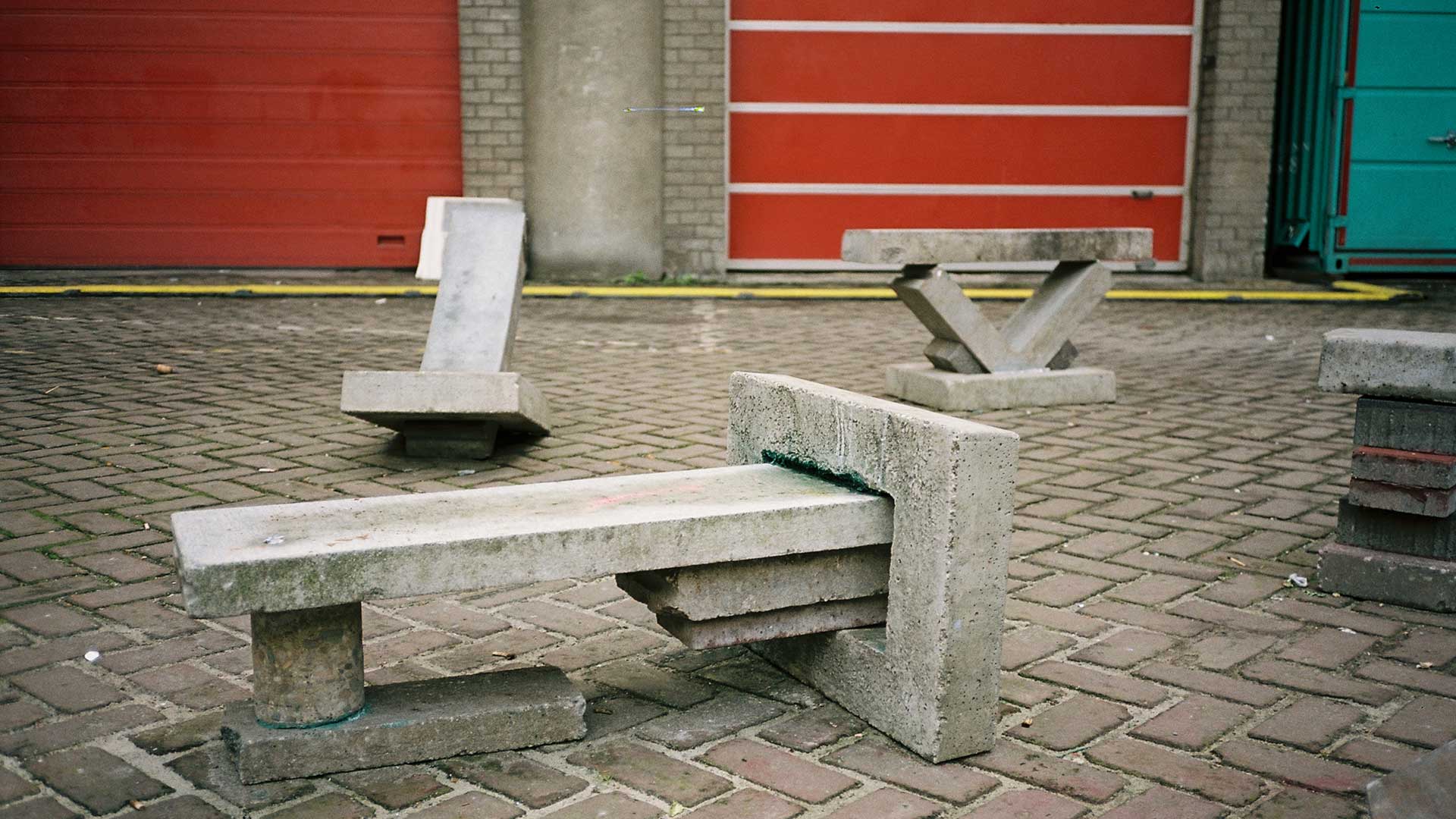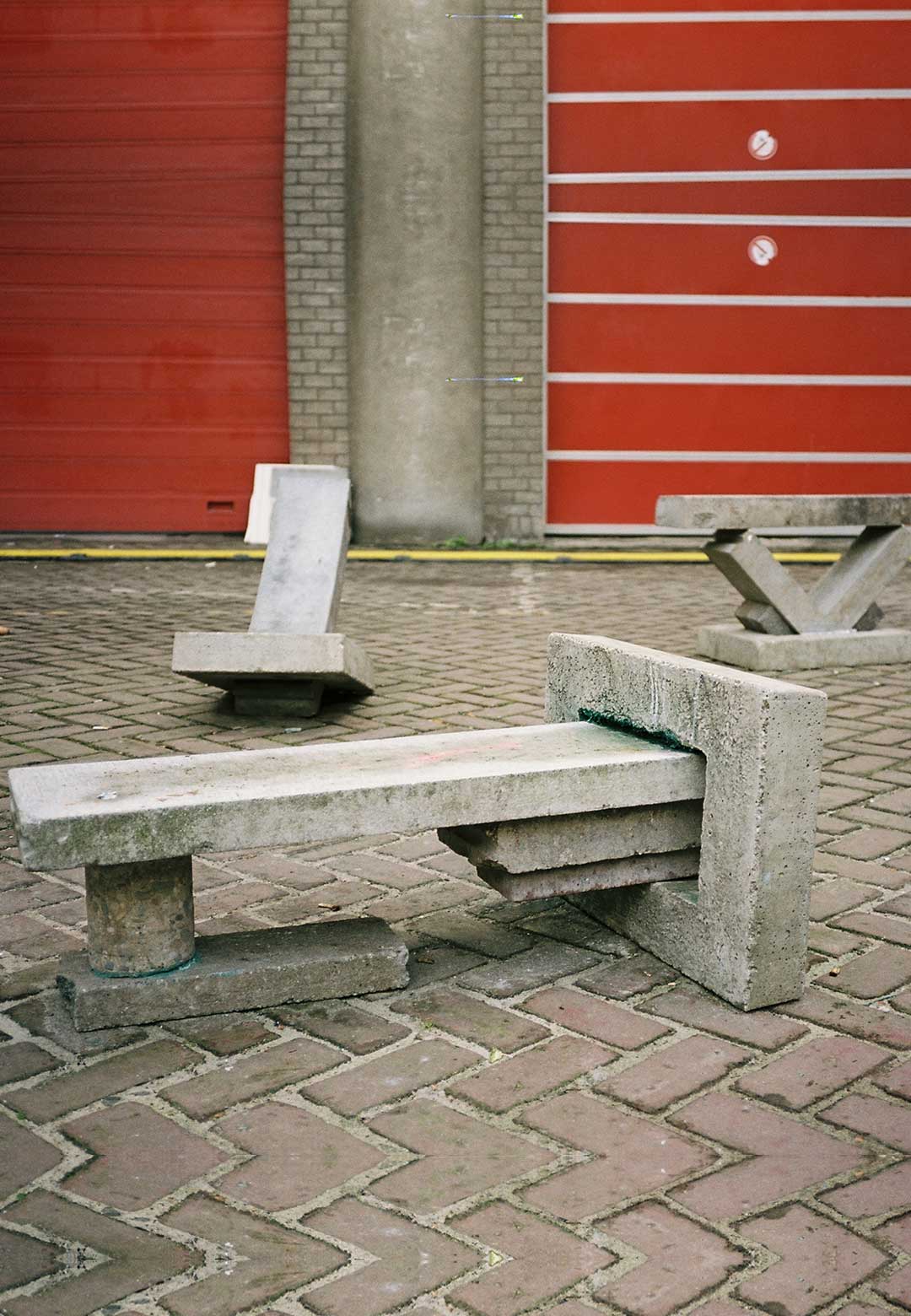A city, according to the Italian architect Aldo Rossi, can be viewed from two theoretical perspectives: as "a massive man-made object growing over time" and as "an urban artefact characterised by their own history and form." Either way, it is a physical object that is made by humans for humans. Even when a city is on a continuum—growing, developing and expanding—it still feels like everything occupying the space in a city is static, which includes its public places. Though built to encourage social interaction between its inhabitants, the public spaces of the contemporary world are definite and planned for their respective functions. Earlier public spaces were a work in progress; they evolved over time to meet the needs of their users. Modern public spaces are rather designed settings in which the user adapts to the facilities provided for pre-determined activities.
While this contemplation is in action, Eindhoven-based designer Yuval Harel and Sweden-based designer Leopold Inkapööl raised a pertinent question, “Who owns public space and who gets to influence, change and adapt it?” This question stems from their observations of how public spaces were designed around them. “The city is static. Everything in public space is fixed, stuck and frozen. Its arrangement and organisation are decided by the municipality, not intended to be manipulated by the public. On the contrary, it is built to be immutable, and changing its appearance or placement is considered vandalism. But people aren’t static, we move and change the environment around us. We naturally try to shape spaces. We improve, customise and adapt. We create and we improvise,” share the designers.
In response to their inspection of this pattern in our streets and a creative urge to address it through design, they created an ongoing series of street furniture made of street materials. Titled ‘Stacked Street,’ the furniture design is a literal translation of its name; the foundation for the street furniture is laid by collecting concrete blocks, bricks, curb stones, and square tiles from the streets, stacking them to shape desired furniture, and joining them with pigmented mortar and construction glue.
“Aiming to re-curate the city landscape, we work with the elements that make up our immediate environment: bricks and curbs; fragments of the street that can be manipulated. From loose pavement tiles to stray curb stones or broken bricks, we seek and gather them at their forgotten, discarded and unwanted phase. With quick methods and easy tools, we re-organise the materials and make them into something else. Planned on the spot, made for the place and with what we could get and what we can create from it. playing and composing on the street,” adds the designers of Stacked Street.
The streets of Eindhoven, The Netherlands, where the series' street furniture was discovered, were discovered from sidewalks, gardens, public areas, and at different strata of the city. Due to its rudimentary finishes, imperfect aesthetics and familiar materiality, the product doesn’t appear to be a planned addition. It remains in the public eye like a playful part of the city that emerged from what remains of it. By stacking the objects in different placements, angles and directions, the designers develop various kinds of seating. As the pieces stacked differ from each other in shape and textures, every piece of furniture also remains unique and can’t be replicated.
Talking about the series, Harel and Inkapööl further add, “We preserve the beautiful aesthetics of the bricks and add the connections as detail. It’s our signature with an instinctive visual language that contrasts the hyper-organised public surrounding. A new life in a new form. We take from the city, and we give back to it.” A nose dive into its creation as a step towards public intervention in the spaces of the cities, they believe that actions like these would accelerate rearrangement in the way our cities function. Along with the creation of Stacked Street for the public layers of the city, the designers are also aware of the role it may plan towards the consumerism of the city. The street furniture was made from the streets and in the streets, they are no stakeholders. Therefore, they can be used, removed, destroyed or implemented in more places. In minimal addition and efficient reuse, the street furniture series is not just a sustainable design approach but an inclusive and feasible one that any city can adopt and adapt.
Concluding their intent for the series, the designers share, “We see design as our skill set and method to provoke changes. We want to have a livelier city, one that is influenced by its inhabitants. A city that moves with its people. We want to be part of the public space, not only dwell in it. We want to inspire people to use the public space differently. To see the city as all our playground, our sandbox, and our gallery. To create what we miss. To see what happens when you give something to a city. To see how the public adopts it. We are questioning how public the public space really is. We are the public. Is it ours?”
“Can we influence it? Can we change it?”
“Apparently, we can.”






 Sign in with email
Sign in with email










What do you think?